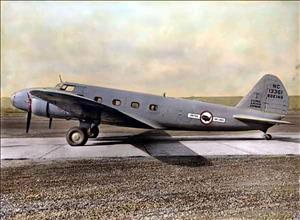On February 8, 1933, the Boeing 247 takes flight from Boeing Field, ushering in a new era of air travel. The twin-engine, 10-passenger monoplane blazes new trails in aviation, but will quickly be overtaken by the competing Douglas Aircraft's DC-2, and never take off commercially the way Boeing hopes it will.
A Speedy Plane
At the time, the 247 was the fastest transport plane around, with a top speed well over 200 miles per hour. Variable-pitch propellers gave the plane superb takeoff abilities and an economical cruising speed. Its cantilevered wings housed landing lights and de-icers, and the landing gear was retractable, lessening the drag coefficient in flight.
Appearing at the 1933 Chicago's World Fair, the plane proved a hit with visitors. In 1934, it won the Collier Trophy, given to great achievements in the field of flight. Regardless, the plane was practically obsolete as it entered service, and Boeing ended up selling only 75 of the model to airline companies. Boeing pinned its hopes on United Airlines, which had ordered 60 of the planes. Early interest in the 247 by TWA and American Airlines was offput by the fact that United had "first call" on the orders.
Not one to be spurned, TWA's Jack Frye approached a small aircraft manufacturer in California to determine whether he could build a better plane than the 247. That manufacturer was Donald Douglas. His prototype, the DC-1, led into production of the DC-2. The DC-2 proved to be a far better aircraft, and within a year, United was unloading its 247s in order to buy new DC-2s. Subsequent development of the DC-3 provided Boeing with even more competition for many years to come.
In Boeing's haste to open its own vistas for commercial air transportation, it inadvertently opened the door for one of its fiercest competitors. This competition went on for decades until, in 1997, Boeing and McDonnell Douglas merged. Boeing ended up selling only 15 more 247s beyond its initial order to United. Two of these planes were sold to Lufthansa Airlines of Germany in 1934. Later, during World War II, it was discovered that the planes had been appropriated by the German military. The British captured a Heinkel 111 bomber, and when Boeing engineers examined it in Seattle, they found design elements that were lifted directly from the 247.

